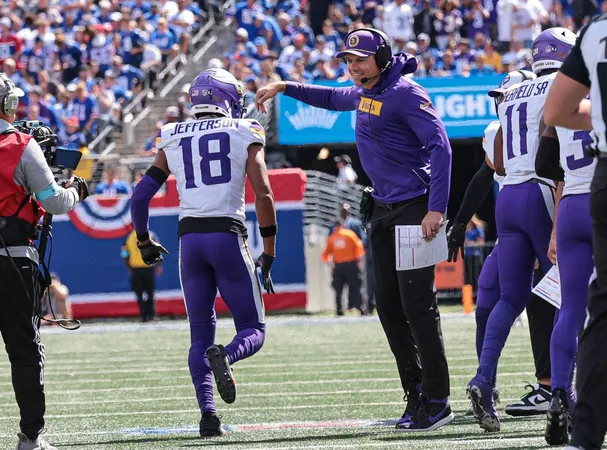
Keir Starmer's Bold Reshuffle: Aiming for Stability After Sue Gray's Stunning Exit
2024-10-06
Keir Starmer's Bold Reshuffle: Aiming for Stability After Sue Gray's Stunning Exit
In a significant move signaling a response to internal turmoil, Keir Starmer has reshuffled his top team following the resignation of his chief of staff, Sue Gray. Her departure comes amid mounting scrutiny and tension that have reportedly weakened the Labour government's standing fewer than 100 days into its term.
Gray's resignation was unexpected as it occurred just days before a milestone celebration for the Labour government. Known for her role in investigating the Partygate scandal, Gray faced increasing criticism during her tenure, a situation exacerbated by her conflicts with Morgan McSweeney, who directed Labour's successful election campaign and has now stepped into the chief of staff role.
Despite attempts by senior Labour officials to downplay tensions between the two, candid discussions revealed that Gray's exit was anticipated. One cabinet minister had hinted weeks before her resignation that “one or both of them will have to go,” clearly suggesting it wouldn’t be McSweeney.
Her time in office was marred by accusations of micromanagement and criticism of her extensive control over communication, raising concerns among ministers about bottlenecks in decision-making. Insiders blamed her for sparking controversy over government perks, indicating a lack of political savvy despite her extensive civil service experience.
The pressure intensified with persistent leaks undermining Gray’s position, leading to disappointment among some insiders who believed that the narrative against her had triumphed. While a few cabinet members voiced their support for Gray, cautioning against damaging briefings that endangered government cohesion, her critics claimed she had created significant obstacles within Downing Street.
Following her resignation, Gray will assume the position of prime minister’s envoy to the nations and regions, amidst speculation about receiving a peerage. In her farewell statement, she acknowledged the growing distraction created by the controversies surrounding her role.
Simultaneously, Keir Starmer has undertaken steps to stabilize his administration, announcing a reshuffle to reinforce the team at No. 10. In an effort to convey his commitment to meaningful change as per the electorate's wishes, Starmer has welcomed new talent, including promoting women within his senior team—an encouraging shift in dynamics.
Vidhya Alakeson, the political director at No. 10, and Jill Cuthbertson, director of government relations, are taking on the roles of deputy chiefs of staff, while James Lyons joins as head of a new strategic communications team. Meanwhile, Nin Pandit, a previous director in the Downing Street policy unit, has been appointed as the new principal private secretary to the prime minister.
While the reshuffle aims to bring calm to the leadership ranks, the Conservative party has labeled the Labour government a state of "chaos," emphasizing that Gray's exit raises questions about the government's ability to govern effectively amidst strife. After less than 100 days in power, critics are left pondering: Who’s really in charge of the Labour government now?
With these developments unfolding, the Labour leadership is under closer scrutiny than ever, as they strive to navigate the challenges ahead and fulfill their promises to the electorate. Will Starmer's reshuffle pave the way for a stronger administration, or will it only escalate the discord within the party? Stay tuned!









 Brasil (PT)
Brasil (PT)
 Canada (EN)
Canada (EN)
 Chile (ES)
Chile (ES)
 España (ES)
España (ES)
 France (FR)
France (FR)
 Hong Kong (EN)
Hong Kong (EN)
 Italia (IT)
Italia (IT)
 日本 (JA)
日本 (JA)
 Magyarország (HU)
Magyarország (HU)
 Norge (NO)
Norge (NO)
 Polska (PL)
Polska (PL)
 Schweiz (DE)
Schweiz (DE)
 Singapore (EN)
Singapore (EN)
 Sverige (SV)
Sverige (SV)
 Suomi (FI)
Suomi (FI)
 Türkiye (TR)
Türkiye (TR)